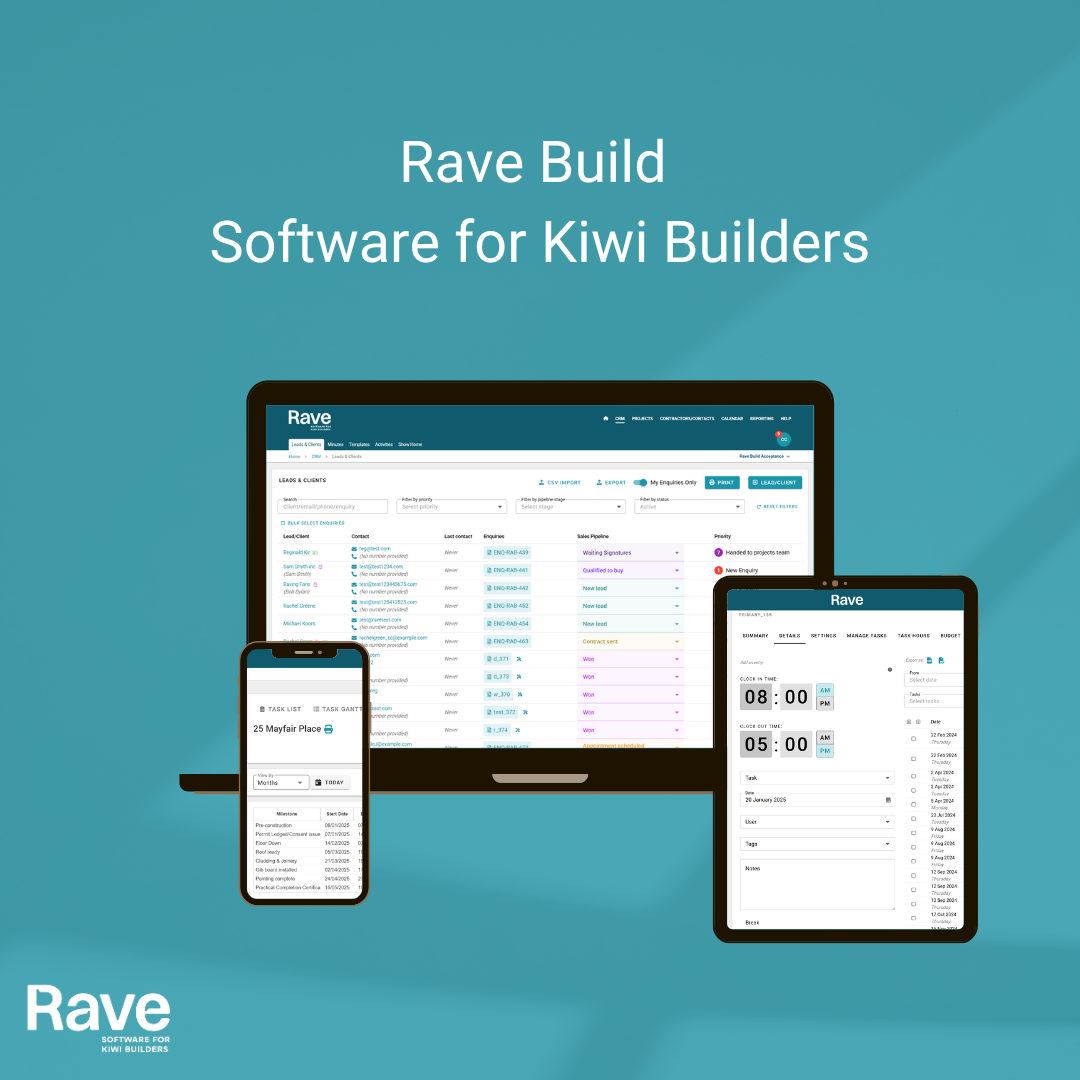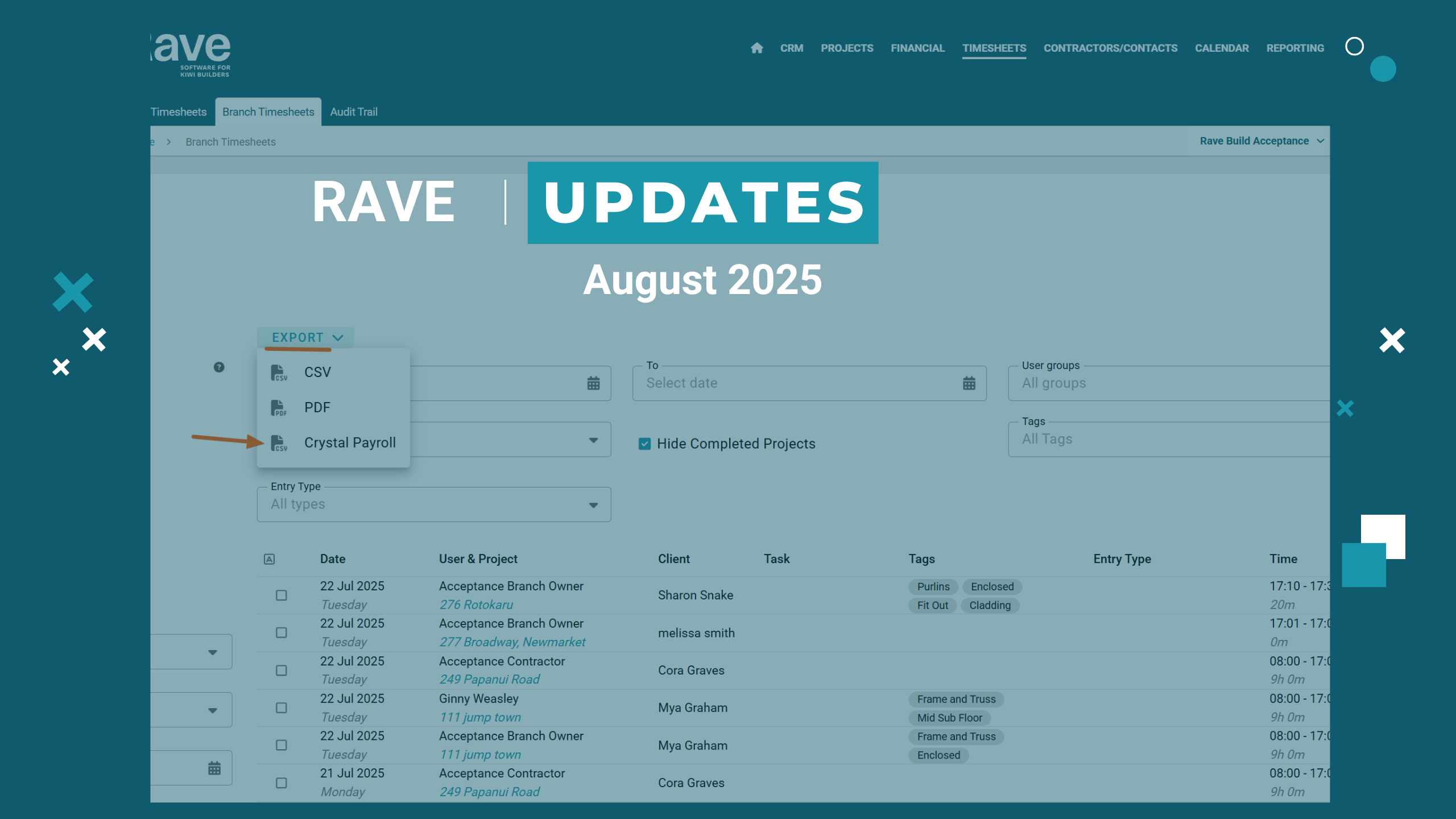We all know there is a lot to remember when pricing a job. The most important part is: Am i making a profit and how much? A key factor in answering that question is knowing the difference between a markup and a margin. A lot of kiwis mix up markup and margin which in turn means they are making less money than they thought or in some cases not making any money at all.
Rave has a very easy to use calculation that shows both the markup on a project and the margin when pricing jobs regardless of if its charge up, fixed price, turn key, progress claims or even variations.
First let's delve into the difference between markup and margin using some basic pricing and calculations.
Margin (Profit Margin/Gross Profit Margin)
To calculate your margin, you must subtract the cost price from its sale price.
For example, imagine that a variation was sold to your client for $1100 + gst and it cost you $900 + gst
To calculate your Margin as a $ value the equation is $ = Sale price – Cost price
$1100 - $900 = $200 margin
This means that this variation has a margin of $200 + gst
You can also calculate your margin as a percentage
To calculate your margin as a % value ((Sale price – Cost price) ÷ Sale Price)*100 Margin = profit %
((1100 –900 ) ÷ 1100)*100 = 18.18%
This means that this variation has a Margin of 18.18%

Now let's look at the same figures but using Markup % and $
Markup refers to the difference between a product’s selling price and its cost price. It’s looking at the same transaction but from a very different angle. Again, using the same sale above – the item has a cost price of $900, and is marked up by $200, to achieve a final sale price of $1100.
To Calculate Markup as a percentage ((Sale price – Cost price) ÷ Cost Price)*100 = markup %
((1100 –900 ) ÷ 900)*100 = 22.22%
This means that this variation has a Markup % of 22.22%
.png)
Looking at the Margin and Markup results in terms of dollar amount, both the margin and markup are the same amount of $200. However, you can see that the margin percentage of 18.18% is much lower than the markup percentage of 22.22%. But why does this matter? Its the same number. Yes its the same number but one is showing you the markup on the item and the other is showing you the profit you made. Many companies confuse their markup % with their margin % – which is disastrous when running a profitable business.
The basis for the Margin % is Revenue/Income, while the basis for the Markup % is Cost plus.
How RAVE’s FMS can help
The key takeaway here is that any business that confuses their profit margin (gross profit) % with their markup %, when pricing up a job, may find itself in the red once all costs have come through. Fortunately, RAVE’s FMS makes this easy to avoid, by allowing you to:
- Easily set (and amend) your expected margin (gross profit) per job, per quote, or per item within our Estimate, Variation and Quote creation systems
- Automatically track your actual gross profit vs expected gross profit in real-time – with our back-costing reports
- Access FULL company profitability reports for ALL jobs showing gross profit by date range – so you can track company gross profit as well as individual job gross profit and much more!

We hope that this explanation of margin (gross profit) and markup has helped clarify these for you. If you need more clarity on your projects’ profitability and need to add on RAVE’s FMS module to help you keep your jobs (and your business) in the black – please reach out to us via phone 07 210 2228 or help@ravebuild.co.nz.


%20(1).png)
